Looking for an inexpensive way to transform your car’s appearance? Consider coloring the letters on your tire sidewalls! Not only will it freshen up your car’s appearance, but it’ll also separate your car from the pack with a unique high-performance look.
A Jeep Wrangler Rubicon 10th Anniversary Edition with white lettering on its tires, via Tuner Tom
All this project requires is about $20 and a few hours of your time.
First, let’s talk about the paint. You can paint the lettering on your tires any color you want. The most common color is white, followed by yellow. When painting tires, you have to use oil-based paint. The easiest way to apply it on the tire is with a paint marker. Now, let’s take a look at a comprehensive list of all the supplies you’ll need for this project:
Here’s what you need to do with each tire:
1. Remove the tire from your car.
2. Scrub the dirt and oil from the lettering area or the whole tire with a tire cleaner (or Windex if you don’t have tire cleaner). If you’ve used tire shine in the past, you’ll have to apply some extra elbow grease to get it all out. Once the cleaned area (or the whole tire) starts to look dull, it’s clean and free of any oily residue. Wipe with a clean rag until dry.
Make sure your tire letters are completely clean and dry! Credit: CashedOutCars’s YouTube tutorial
3. Grab your medium tip paint marker and shake it well. Pump the tip against a piece of paper, paper towel, or cardboard repeatedly until the paint starts to come out and the tip is well-saturated.
Saturate the tip of the pen with paint before beginning. Credit: CashedOutCars’s YouTube video
4. Color in the letters with the marker. The easiest thing to do is to fill in the centers first and then outline them carefully with the fine tip paint marker.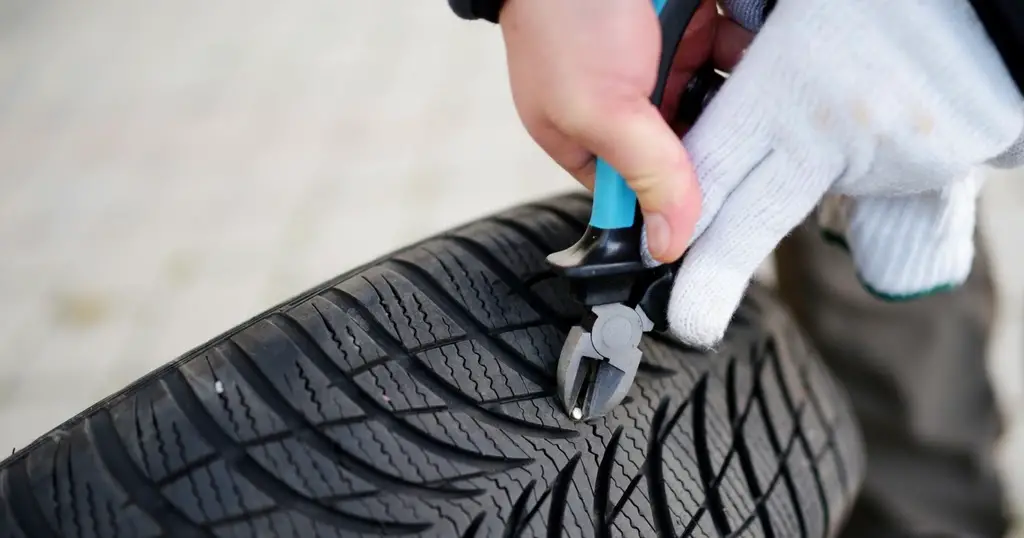
Take your time coloring in the letters for a clean look. Credit: CashedOutCars’s YouTube video
5. Touch up any of the spots you may have missed and let the paint dry. If you want your lettering to look brighter and bolder, apply another coat.
The end result. Credit: CashedOutCars’s YouTube video
If your car has white letter tires, you know how hard it is to maintain that white color. White-letter tires catch dirt and stain very easily making your car look unflattering and outdated. To bring back the shine of your tires, you need to know how to clean white letters on tires.
White-letter tires catch dirt and stain very easily making your car look unflattering and outdated. To bring back the shine of your tires, you need to know how to clean white letters on tires.
Luckily, there are a few products available on the market today for removing the dirt and stains from the white letters. While the most popular technique is to use SOS pads, there are some bottled cleaning solutions and bleaching agents that work just fine.
Here we will tell you various methods of cleaning your white letter tires so that you can whiten your tires without damaging the rims. Let’s dive in.
Below we have listed the most common and easiest methods of removing the dirt and stains from white letter tires. Go through the procedures and pick one that you find the most convenient.
This is a popular product for removing the brown layer from the white letter tires. By using the SOS pads, you can bring back around 85% of the whiteness.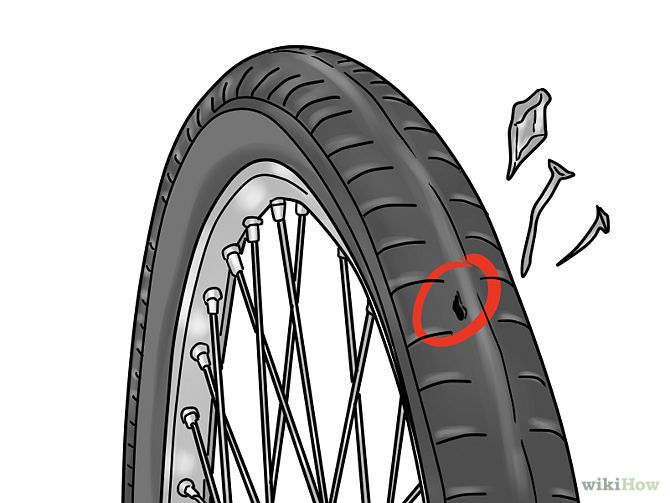 You can use this abrasive cleaning pad to reach all the corners of the tires and collect the dirt from those hard-to-reach areas.
You can use this abrasive cleaning pad to reach all the corners of the tires and collect the dirt from those hard-to-reach areas.
Here’s how to use the SOS pads-
Step 1) Get a packet of SOS pads from your nearby store. You can also purchase one online.
Step 2) Do the basic cleaning for removing the dust from your tires. Use your regular car washing detergent or soap to remove the dust and dirt from your tire’s sidewalls and around the rims. By doing the basic cleaning you will only be able to clean the regular dirt and minor stains.
Step 3) Now unpack the SOS pads and take one to scrub the dirty parts of the sidewall. The pads are a very powerful combination of steel wool and soap that can easily remove tough messes.
Therefore, you don’t have to use any extra soap or other solutions to remove the dirt. As you scrub, you’ll notice the brown color is vanishing slowly exposing the real white color of the tires.
Step 4) When you’re done cleaning all the corners, use plain water and wash off the remaining soap from the tire to complete the process.
Are your white letter tires turning brown? Then bleaching the tires can be the best way to restore the white color. As we all know, bleach is commonly used to whiten and sterilize various materials. Bleach is basically a chemical featuring hydrogen peroxide or sodium hypochlorite.
If using SOS pads or other solvents doesn’t do the work for your tires, you can use bleach to whiten your tire’s sidewall. Keep in mind that, this chemical is very strong and can be harsh on the materials of your tire.
Hence, it’s not recommended to use bleach on a regular basis. Here’s how you can use bleach to keep your white letter tires from turning brown-
Step 1) Purchase a good-quality bleach in spray form and do an initial wash to make sure that your tires are clean. Also, the bleach will only whiten the tires instead of cleaning them thoroughly. So, use a scrubber to remove the dirt from the corners.
Also, the bleach will only whiten the tires instead of cleaning them thoroughly. So, use a scrubber to remove the dirt from the corners.
Step 2) Apply the bleach spray on the letters and the stained areas. When you’re done, let the product sit and wait for ten minutes.
Step 3) Use a standard pad of carwash cloth to rub the area and clean it properly. After that, use your hose pipe to wash the tires thoroughly. Reapply the product until the brown layer is fully eradicated.
Many people have found using a cleaning solution or solvent a far more effective and quicker method of removing the dirty brown layer from the white letters on tires. However, since such solutions contain many compound chemicals, some car owners often hesitate to use these solutions.
So, check out the ingredient list and customer reviews before purchasing a cleaning agent. Otherwise, the rims of your tires might deteriorate due to chemical reactions. Here’s how you can use a cleaning solution-
Here’s how you can use a cleaning solution-
Step 1) Take a regular pad or carwash towel for applying the solution. Start the cleaning process by wetting the pads and tires using your water hose.
Step 2) Apply the cleaning solution of your choice. WD40 is a reliable cleaning solvent that won’t do any harm to any parts of your tires. If the solvent is in a spray form, apply it directly to your tires while they are still wet.
As for the liquid cleaners, you need to pour the solution into a bucket and mix it well with water. Check out the directions on the container for knowing the exact amount of water you should mix.
Step 3) Soak the cleaning pad or towel in the solution and start scrubbing the tires thoroughly. You might have to put some extra effort into cleaning the white letters. A toothbrush-style brush can be very helpful in this process.
Mostly, the effectiveness of your cleaning will depend on the strength of the solution, and how intensely and how long you scrub the tires.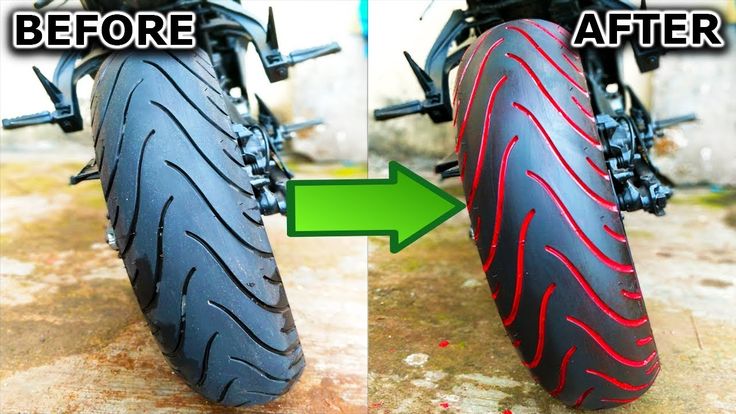
Step 4) Wash the tires every two minutes and check out the progress. Reapply the solution and keep repeating the scrubbing process until you’re satisfied with the cleaning.
Step 5) When you’re done, use your water hose to thoroughly wash away the remaining solution.
Even after you try all the techniques to clean the white letter tires, some areas remain yellowed no matter how intensely you clean them. In such cases, sandpapers can do magic!
While the process of manually using sandpaper can be painful, many car owners prefer this method over others as no harmful chemicals are involved in this process. Here’s the process of sanding white letter tires-
Step 1) purchase a piece of 400 grit sandpaper. As you might know, sandpapers won’t cost you much.
Step 2) Wash your tires properly to clean off the dust. Now rub the sandpaper against the letters to clear the brown layer.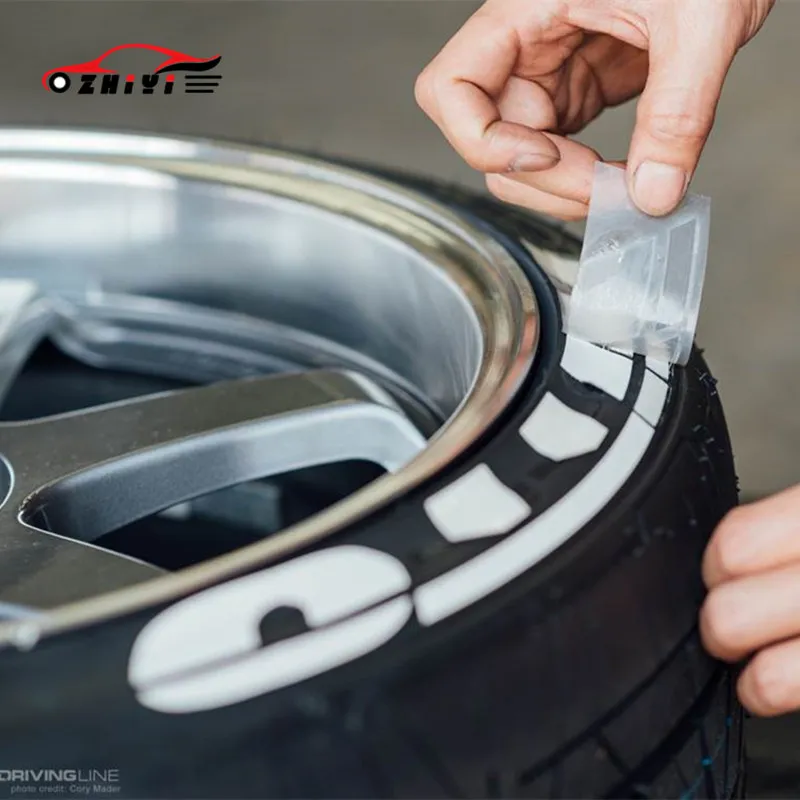 You can use a sander for this job. Otherwise, simply use your hands to easily reach all the parts.
You can use a sander for this job. Otherwise, simply use your hands to easily reach all the parts.
Step 3) After you have removed all the dirt, yellowness, and stains, use some water to complete the cleaning process.
This home remedy for cleaning white wall tires has worked for many people to some extent. You can use this method for cleaning the minor dirt and marks. Grab your old toothbrush and follow the steps given below-
Step 1) Do an initial cleaning using water and soap. Then apply your toothpaste to the old toothbrush.
Step 2) Brush the letters like you brush your own teeth while targeting the dirty areas. You might have to put some extra effort to remove the stubborn stains.
Step 3) When you achieve your desired results, wash the tires with plain water.
Why do the white letter tires turn brown?
White-letter tires turn brown for a few reasons.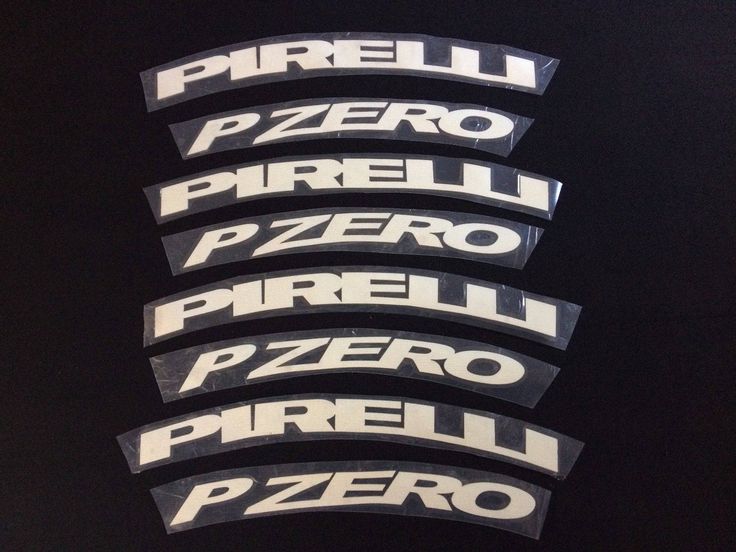 Mostly, the reason is lack of proper maintenance and cleaning. When you skip regular cleaning, dust and stains start accumulating on the white letters. Also, the material of the tire plays an important in creating the brown layer.
Mostly, the reason is lack of proper maintenance and cleaning. When you skip regular cleaning, dust and stains start accumulating on the white letters. Also, the material of the tire plays an important in creating the brown layer.
Antizonants elements are used in the rubber tires to prevent them from drying or cracking. Sometimes these elements are released from the tire and react with oxygen. This reaction creates a brown residue that is left behind on the tire’s sidewall.
What is the best white wall tire cleaner?
If you want to do the cleaning manually SOS pads are easily the best choice. WD40 spray solution, Cycle Care formulas for whitewall, and Green all wheel & tire cleaner are some of the most reliable chemical solvents. Instead of compound chemicals, you can also use toothpaste or baking soda to clean the dirt, oil, and other marks.
Does Magic Eraser work on white wall tires?
Yes, some magic erasers do work well on white wall tires.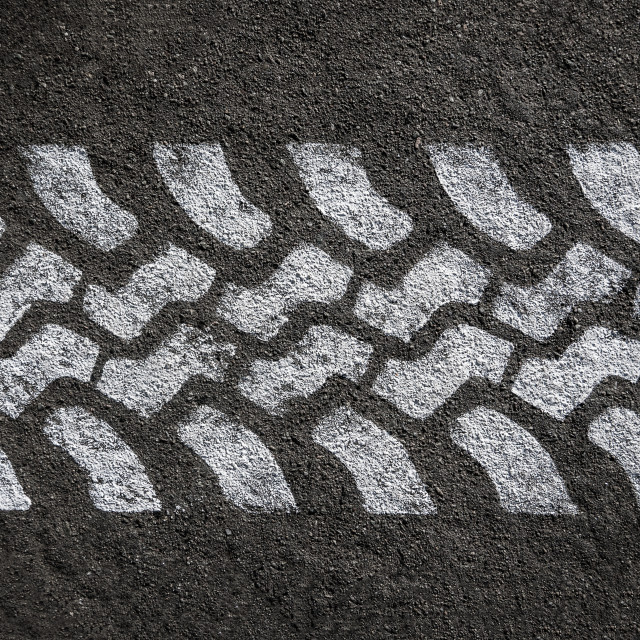 In fact, cleaning white wall tires with magic eraser is an easier and much quicker way in comparison to other products.
In fact, cleaning white wall tires with magic eraser is an easier and much quicker way in comparison to other products.
You just have to apply the magic eraser on the tires and scrub the area with a regular carwash towel. And the white letters on your tires will sparkle like never before.
That was pretty much everything on how to clean white letters on tires. We have covered the most effective methods of cleaning the tires and bringing back their shine.
For quick cleaning, simply use a strong cleaning solution. If you want to whiten the tire’s sidewalls, bleach them for the best results.
Ed Walker
Ed Walker is an automotive cleaning expert with extensive automotive cleaning skills.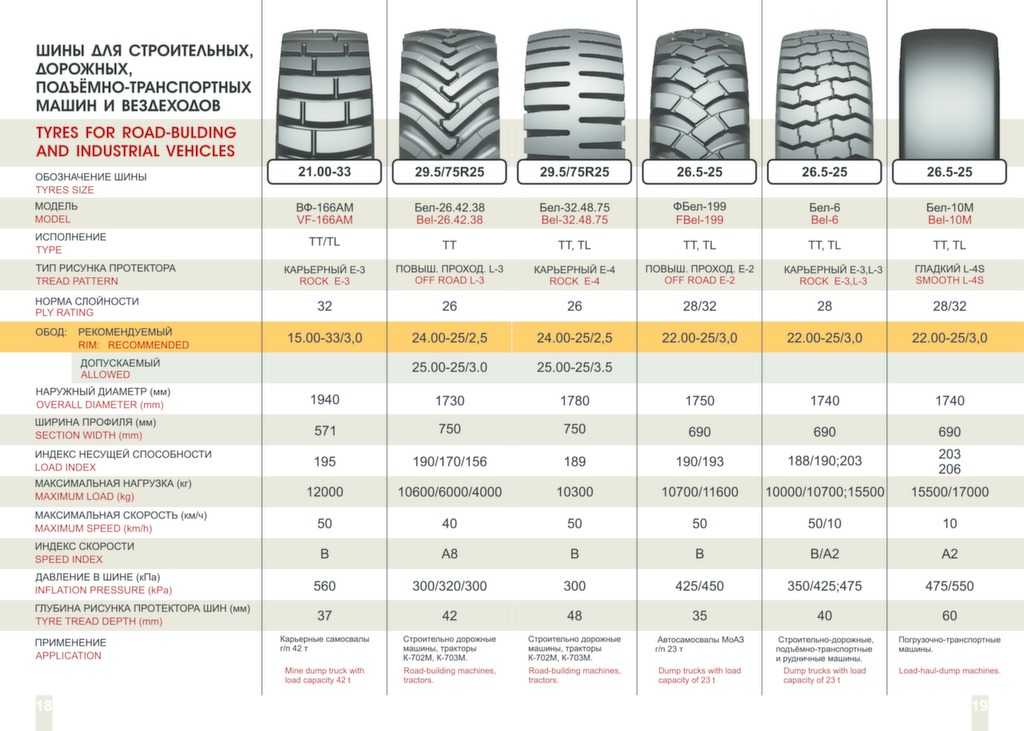 I have been working in automotive cleaning plants with perfection for the past decade. In addition, I own my cleaning workshop, where we wash away firm dirt and grease out of vehicles and turn them into new ones. Sharing cleaning tips for automotive is my passion.
I have been working in automotive cleaning plants with perfection for the past decade. In addition, I own my cleaning workshop, where we wash away firm dirt and grease out of vehicles and turn them into new ones. Sharing cleaning tips for automotive is my passion.
Contents:
The selection of tires is carried out taking into account a number of parameters - their diameter, width, and profile height must be taken into account; in addition, the speed index and the load index are of no small importance. The manufacturer always indicates these indicators on the sidewall. What they mean will be discussed below.
The value corresponds to the maximum permissible speed at which tires of this type can be operated. Accordingly, if a motorist plans to drive at a higher speed, it makes sense to think about buying tires with a higher index value.
| Index | K | L | M | N | P | Q | R | S | T | U | H | V | VR | W | Y | ZR |
| Max. speed, km/h | 110 | 120 | 130 | 140 | 150 | 160 | 170 | 180 | 190 | 200 | 210 | 240 | >210 | 270 | 300 | >240 |
For example, if the tire has a mark that the speed index corresponds to the letter V, then this indicates that it is strongly not recommended to drive on these tires at a speed of more than 240 km / h.
This is a no less significant parameter, which, in contrast to the value discussed above, is indicated by a number. In the tire label, the load index factor follows the tire diameter.
For example, a value of 91 indicates that the maximum allowable load per tire cannot exceed 615 kg. Accordingly, the total load calculated on 4 wheels should not exceed 2460 kg. The complete load index table contains coefficient values from 1 to 279. For 13-inch passenger tires, the load index can be, for example, 75. And for R20 wheels, this coefficient will reach 120.
Load index table
Of course, the given load value does not mean that if it is exceeded, the tire will immediately be torn to pieces. A short-term excess of 20-30% is acceptable, but this should not become a habit.
According to EU regulations (ECE-R54), all tires that are planned to be used for commercial vehicles must be marked with a "Service Description" (translated as "Operating Conditions").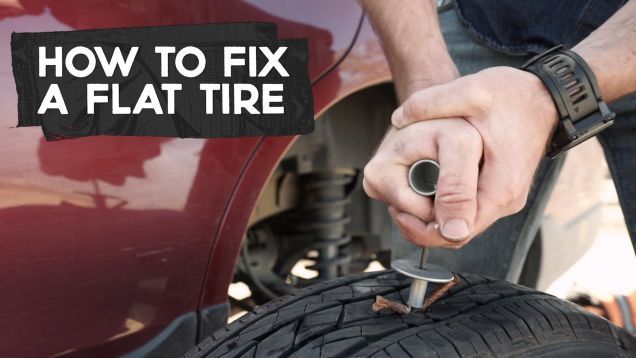 It is a special code next to the tire size, which carries information about the load index calculated for single and dual wheels (as an option - 102/100R).
It is a special code next to the tire size, which carries information about the load index calculated for single and dual wheels (as an option - 102/100R).
The information must be recorded on both sidewalls of the tire. The 1st digit indicates the load capacity of the tire in the case of a single installation - the 2nd corresponds to the level of the maximum load on one tire with twin wheels. Additional markings are used to indicate the corresponding tire loads at higher speeds. Additional markings are always circled.
205 - the width of the tire profile, indicated in mm. In this case - 205 mm .
55 - the value of the height of the tire profile in%, determined from its width. In the situation under consideration - 55% of 205 mm will be equal to = 112.75 mm.
Given that the tire profile is a relative value, the following point must be taken into account when selecting rubber: if instead of size 205/55 R16 want to install tires with size 215/55 R16 , then not only the width of the tire will increase, but also its height! Such a situation is in most cases unacceptable (the only exception is the situation in which both sizes are given in the car's operating book).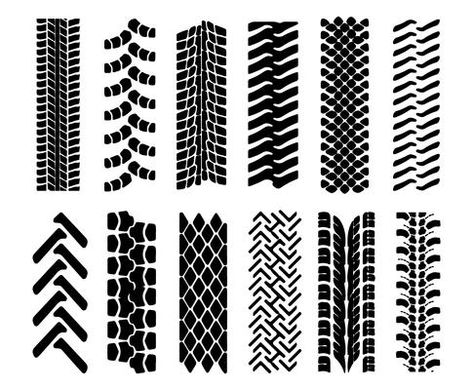 If this ratio is not given (as an option - 185 / R14С ), then this means that its value is 80-82%, and the tire is considered full profile. Reinforced tires with this marking are most often used on minibuses and light trucks - in these vehicles, the maximum allowable wheel load is of great importance.
If this ratio is not given (as an option - 185 / R14С ), then this means that its value is 80-82%, and the tire is considered full profile. Reinforced tires with this marking are most often used on minibuses and light trucks - in these vehicles, the maximum allowable wheel load is of great importance.
R - characterizes the design of the tire. In the situation under consideration, the tire is radial - the design determines the location of the carcass cord threads.
It is completely wrong to assume that the designation R indicates the radius of the tire. The symbol refers solely to its radial design. There is also a diagonal design (it corresponds to the letter D ), but today almost no one produces it. Reason: poor performance.
16 - the value of the diameter of the wheel (disk), indicated in inches. This diameter for the tire is internal, for the disk it is external. That is why it is called "landing".
94 - load index (it was already mentioned above). The interpretation of the most commonly used coefficients is given in the table of load indices. Often, the load is decoded on the tire itself: two numbers follow the Max Load inscription - the first in kg, the second in pounds.
The interpretation of the most commonly used coefficients is given in the table of load indices. Often, the load is decoded on the tire itself: two numbers follow the Max Load inscription - the first in kg, the second in pounds.
H - tire speed index. Please note that with this parameter, the tire manufacturer guarantees the normal operation of the rubber when the vehicle is driven non-stop at the specified speed for several hours. The decoding is given in the speed index table.
XL - this characteristic indicates that the tire is reinforced. Its load index is 3 units higher than conventional tires of the same size.
Separately, it is necessary to mention the RunFlat technology, which provides for the strengthening of the sides of the tire. As a result of damage, such a tire does not deflate and sag under the weight of the car, but allows you to drive a certain distance at a certain speed even after a complete loss of pressure. Those. The wheels are provided with additional protection. This quality is marked on tires in different ways - RSC, MOE, AOE - depending on the brand of car.
This quality is marked on tires in different ways - RSC, MOE, AOE - depending on the brand of car.
In addition to the above symbols in the form of letters and numbers, important information is indicated on the tires through colored labels. Below is an interpretation of each of them.
Apply in the lightest part of the tire. When installing a new tire on a rim, the yellow mark should be aligned with the heaviest part of the rim (easy to identify - it always corresponds to the nipple attachment point).
The label makes it possible to optimize the wheel balance and use lighter weights. On used tires, the yellow marking is no longer relevant - tire wear leads to a shift in its balance.
It has the appearance of a red dot on the tire and indicates the location of the maximum deviation of the radial force. At this point, the tire has the largest radius due to the greater number of layers and it is the most rigid. Inhomogeneity of tire plies is normal during tire manufacture.
Inhomogeneity of tire plies is normal during tire manufacture.
The red dot on the tires during installation must match the white dot on the rims (note that both marks are placed on the original car tires). The white dots on the rims indicate the location closest to the center of the wheel. Alignment of the red dot on the tires and the white dot on the rims is recommended to reduce the effect of maximum heterogeneity in the tire. So it is possible to provide a better balance of the power characteristics of the wheel. In conventional tire fitting, one should not attach great importance to the red mark - it is better to focus on the yellow mark, combining it with the nipple.
Corresponds to the individual number of the inspector conducting the final inspection of the tire at the manufacturing plant. The stamp can also be of other colors, this does not change the meaning of the label.
These designations are applied to the tire tread for easy identification of the tire in stock. For tires of all models and different sizes, this marking is different. There is no single unification of the application of colored stripes. Details on the marking of certain colors on tires are prescribed in the manufacturer's specifications, and can also be indicated on its official website.
For tires of all models and different sizes, this marking is different. There is no single unification of the application of colored stripes. Details on the marking of certain colors on tires are prescribed in the manufacturer's specifications, and can also be indicated on its official website.
Colored stripes make it easy to identify the size and model of a single stack of tires stacked in a warehouse. The semantic load of color bars on the bus is unambiguous.
The letter C in the tire marking means that the tires are “reinforced” (added up to 8 reinforcing layers), with a large load factor.
The letter E, circled - compliance with European standards.
DA (stamped) - Minor manufacturing defects, which do not interfere with normal operation.
DOT - compliance with US quality standards.
M + S (mud and snow) - the designation indicates that the tires are all-weather. The designation AS and All seasons are interpreted in the same way.
The snowflake design indicates that the rubber can be used in the most severe winter conditions. In its absence, the tire can only be used in the warm season and in the absence of a large amount of precipitation.
Made in Finland - country of origin.
MaxLoad - the maximum permissible load based on each wheel of the machine, in kg.
Max Pressure - the maximum allowable pressure level in the tire, in kPa.
Outside or Side Facing Out and Inside or Side Facing Inwards - indicates tire asymmetry. It is necessary to install with the Outside inscription outward, and the Inside inscription - inward.

Sidewall - composition of the sidewall layer
Tubeless - tubeless tire. If this inscription is not present, then it is possible to use a tire only with a camera.
TubeType - indicates the possibility of operation with a camera only.
Steel - indicates the presence of a metal cord in the tire.
TWI - tread wear indicator specifications. The TWI marking can also be marked with an arrow. Pointers are distributed evenly in 8 or 6 places around the entire circumference of the tire. They indicate the lowest possible tread depth.
Umbrella image - indicates rain tires.
This characteristic is indicated in the form of 4 digits (as an option - 2516). Here, the first 25 is the week of manufacture, the last 16 is the year (so the tire was manufactured in June 2016).
What does SUV mean on tires How to store wheels on rims in a garage
For those who are used to deciding on their own the issue of competent selection of tires for their car, we have prepared useful information in this section:
tire design differences.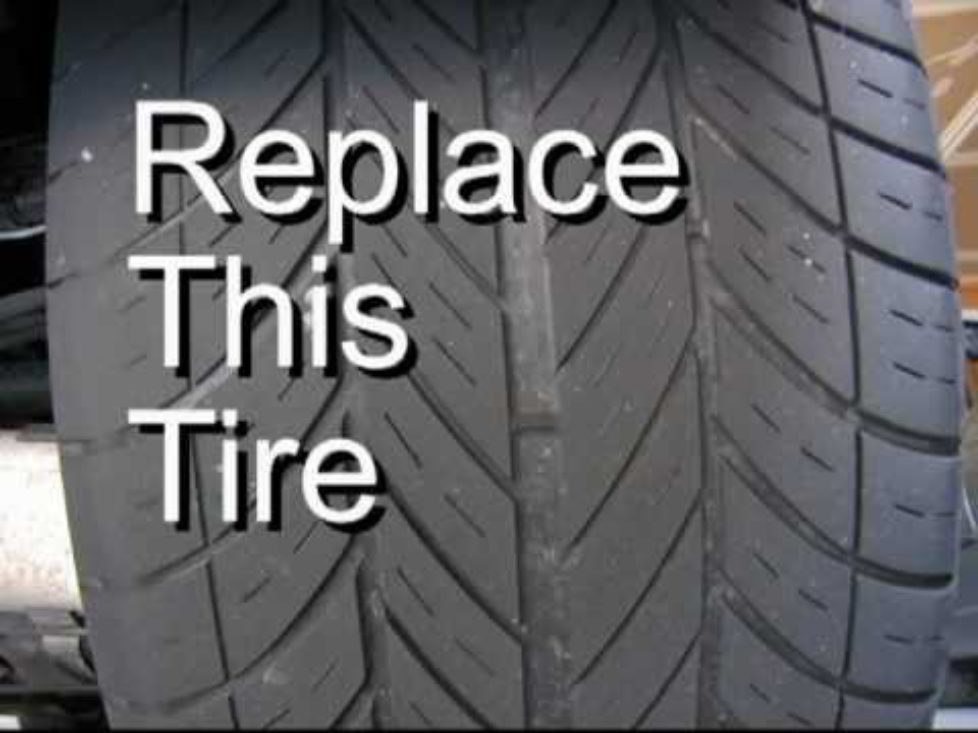
Types of tire marking and interpretation of its meanings.
Types of car tire designs.
Rubber and cord are, of course, the main ones in the production of car tires. Rubber made from natural and/or synthetic rubber is reinforced with cord fabric, which. In turn, it can be made of metal, textile or polymer threads.
The figure shows the classic car tire structure:
1 - tread
2 - shoulder
3 - carcass
4 - side (fender)
5 - breaker and cushion layer
6 - additional insert in the shoulder area
7— bead ring
8— bead part
According to the method of sealing the wheel, tires are divided into chamber and tubeless:
Tube tires consist of several elements: tires, chambers with a valve, with which air enters the tire and blocks its exit to the outside, and a rim tape that is put on the rim to prevent the tube from rubbing against the wheel and tire edge.
Tubeless tires differ from tube tires in the presence of a sealing rubber layer, which is applied to the first layer of the carcass. The camera is missing. The state of tightness in them is achieved due to the tight fit of the tire on the rim. The tire inflation valve is located in the wheel rim hole, which reduces tire weight, improves safety in case of a tire puncture, improves heat transfer, and also simplifies tire repair.
Most modern car tires are tubeless.
Depending on the location of the cords in relation to the radius of the wheel, tires are divided into radial and diagonal.
The carcass of bias-ply tires consists of many rubberized cord spacers, the edges of which are wrapped around wire ring rods (they are what allow the tire to “plant” on the rim). The carcass and breaker cords are crossed in adjacent layers (the number of adjacent layers is usually four) at an angle of 45° - 60°.
Today, this type of tire design is obsolete. As a rule, such tires are used on old cars, while in view of the still considerable fleet and demand for them, as well as the low cost of production, tires with a diagonal cord arrangement continue to be produced. It is worth noting the high maintainability of such tires, as well as resistance to destruction from impacts and cuts.
It is worth noting the high maintainability of such tires, as well as resistance to destruction from impacts and cuts.
The carcass of a radial tire is a structure with a parallel arrangement of the tire cords (along the radius from one bead to the other, and the breaker cords at an angle of more than 65°). In order for the tire to withstand heavy loads at high speeds and sharp turns, it has a steel cord belt in which two layers are wound alternately at a sharp angle. An additional nylon band is used on certain models to further stabilize the behavior of the tire.
Today, tires with a radial arrangement of cords are most in demand due to improved characteristics: structural rigidity, stability of the tire contact patch with the roadway, reduced rolling resistance and, as a result, lower fuel consumption. At the same time, tires with a radial design have a lower weight and carcass thickness, heat up less, give off heat faster, which can significantly extend their service life.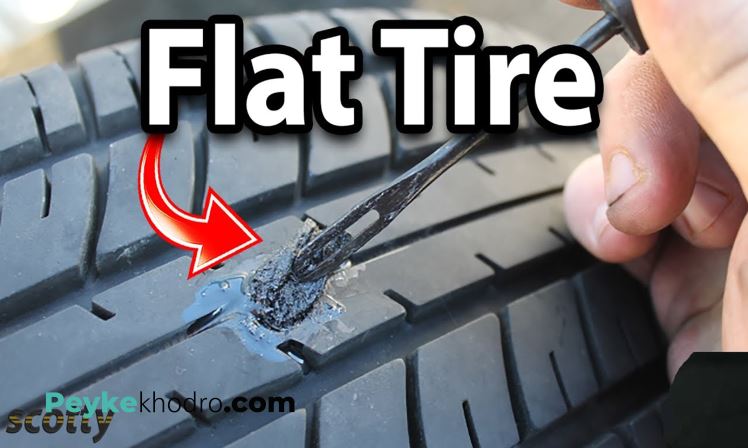
By purpose, the tires are divided into the following groups:
tires for passenger cars;
tires for light trucks and SUVs.
tires for trucks;
tires for construction, agriculture and special purpose of technology.
tires for motorcycles and mopeds.
In the production of passenger and light truck tires, a cord made of textile or polymer threads is used.
Metal cord used in the production of truck tires.
TIRE MARKING.
On November 1, 2012, a law on mandatory tire labeling was passed in Europe. Tires for passenger cars, commercial vehicles and trucks produced in the European Union have a standardized marking. It should be taken into account that the law does not provide for mandatory marking of retreaded tires, off-road tires, tires for cars registered before October 1, 1990, as well as for spare tires and stowaways, tires with a speed index below 80 km / h, studded tires, tires for racing cars.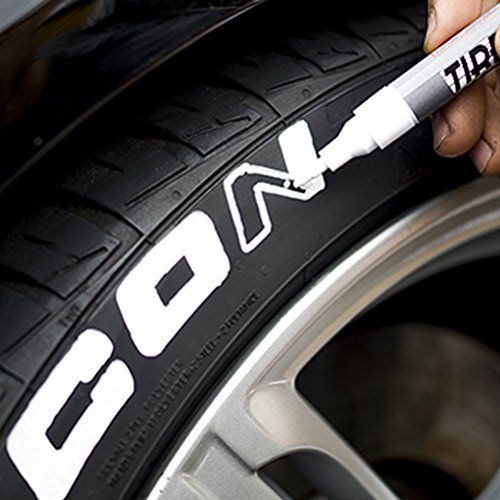
So, according to the European label, tires must be judged on three main criteria: fuel efficiency, wet grip quality, external rolling noise.
Fuel Efficiency (Rolling Resistance)
The fuel efficiency of is an important criterion to consider when choosing a tire. The argument here is quite weighty - about twenty percent of a car's fuel consumption depends on the tires used! The higher the rolling resistance rating of a tire, the higher your vehicle's fuel consumption will be. The level of tire rolling resistance is indicated in Latin letters in the range from A to G. Accordingly, the mark A on the tire indicates low rolling resistance, and therefore the lowest fuel consumption. The G mark indicates the highest level of tire rolling resistance, of course, fuel consumption will be maximum.
What determines the rolling resistance index? A number of determining factors come into play here:
the design of the tire itself.
tire pressure level.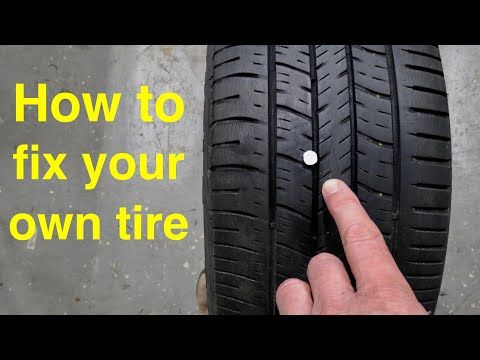
tire temperature and load.
vehicle speed.
the condition of the car's suspension and roadway.
Wet grip .
This criterion evaluates the stopping distance of a vehicle on a wet road surface. Tires are marked with Latin letters in the range from A to F. The difference in the braking distance of a car equipped with category A tires and category F tires will be about eighteen meters (according to measurements made on a car moving at a speed of 80 km / h before braking).
External tire rolling noise.
This refers to the level of noise generated when a tire is rolling and is measured in decibels. The quietest tires do not exceed 60 dB. Tires over 74 dB will be very noisy.
METRIC AND TIRE LABELING.
Winter - tires designed for operation in winter weather conditions.
Aqua, Rain or Water (may be designated with an umbrella icon) - Tires designed for use in rain or wet conditions. Minimize the effect of aquaplaning, especially at high speeds.
Minimize the effect of aquaplaning, especially at high speeds.
M + S (Mud + Snow, which means mud + snow) - off-road tires for driving in mud or snow.
M/T (Mud Terrain) - mud terrains.
A/T (All Terrain) - tires for any type of terrain.
AS (All Season), Any Season, R+W (Road + Winter) - designations for all-season tires.
Rotation - Tires with directional tread patterns have an arrow on the sidewall of the tire indicating the desired direction of tire rotation.
Outside and Inside (or Side Facing Out and Side Facing Inwards) are asymmetric tires, which must be installed strictly following the tire-on-rim rule. The inscription Outside (outer side) should be on the outside of the car, and Inside (inner side) - on the inside.
Left or Right - means that the tires of this model are left and right. When installing them, you must strictly follow the rule of installing a tire on a car, the left ones only on the left, and the right ones, respectively, only on the right.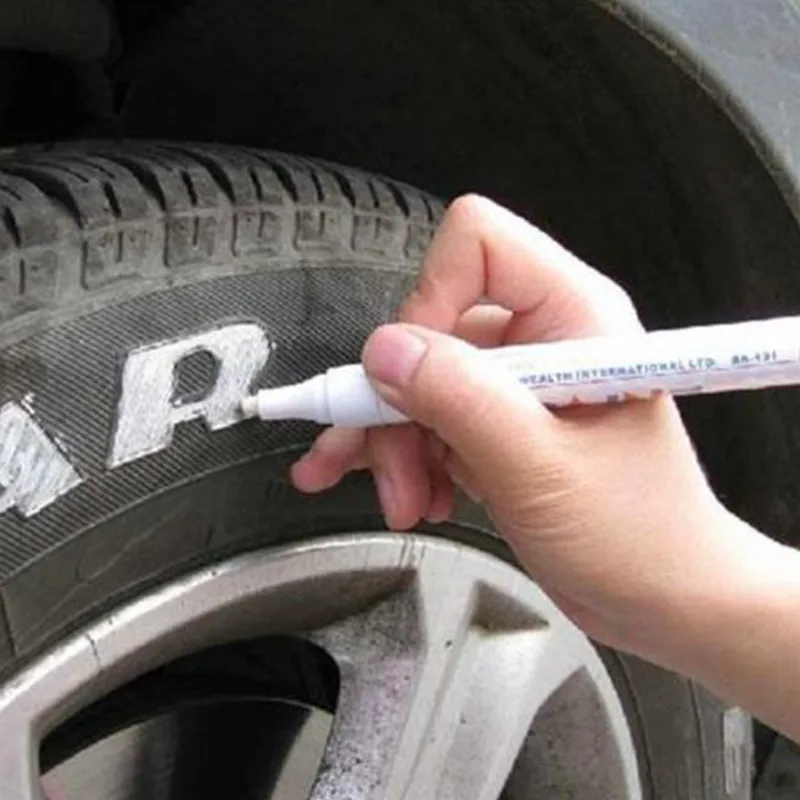
Steel Radial - a radial tire with a steel cord.
Tubeless (TL) - tubeless tire.
Tube Type (TT) - the tire is installed with the camera.
Treadwear 380 - wear coefficient, determined in relation to the "base tire", for which it is equal to 100. The wear index is a theoretical value and cannot be directly related to the practical life of the tire, which is significantly influenced by road conditions, driving style, following pressure recommendations, adjusting vehicle camber angles and wheel rotation. The wear indicator is presented as a number from 60 to 620 with an interval of 20 units. The higher its value, the longer the protector withstands when tested according to the established method.
Traction A - friction coefficient, has the values A, B, C. Coefficient A has the highest friction value in its class.
Max Load - the maximum load and further values in kilograms and pounds.
PR (Ply Rating) - the strength (load-bearing capacity) of the carcass is conditionally estimated by the so-called ply rate. The stronger the carcass, the more air pressure the tire can withstand, and therefore has a greater load capacity. For passenger cars, tires with a ply rating of 4PR and sometimes 6PR are used, and in this case the latter have the inscription "Reinforced", that is, "reinforced" (tires with increased load capacity).
The stronger the carcass, the more air pressure the tire can withstand, and therefore has a greater load capacity. For passenger cars, tires with a ply rating of 4PR and sometimes 6PR are used, and in this case the latter have the inscription "Reinforced", that is, "reinforced" (tires with increased load capacity).
Extra Load (XL) - increased load index.
Reinforced (Reinf or RF) - increased load index. On light trucks and minibuses, tires with 6PR and 8PR are most commonly used. The increased ply (that is, strength) of the tire may be indicated by the letter “C” (commercial), which is placed after the designation of the landing diameter (for example, 185R14C).
TWI - the mark is located on the sidewall of the tire and shows the location of the remaining tread height marks in the main grooves. For the countries of the European Union and the Russian Federation, the remaining tread depth of a worn passenger tire must be at least 1.6 mm.
ZP (Zéro Pression) - zero pressure, Michelin's commercial designation for tires with reinforced sidewalls. ZP: Ability to continue driving in the event of a puncture up to 80 km at speeds up to 80 km/h. ZP SR: Ability to continue driving in the event of a puncture up to 30 km at speeds up to 80 km/h.
ZP: Ability to continue driving in the event of a puncture up to 80 km at speeds up to 80 km/h. ZP SR: Ability to continue driving in the event of a puncture up to 30 km at speeds up to 80 km/h.
SST(Self Supporting Tires) - self-supporting tire. Such tires can carry the load and continue to move after a puncture.
Dunlop MFS (Maximum Flange Shield) - Maximum Bead Protection System protects expensive wheels from damage to curbs and sidewalks - a rubber profile around the tire circumference, located on the bottom of the wall above the rim flange, forms a buffer zone.
Studless - The tire cannot be fitted with studs.
Studdable - Tire can be fitted with studs. In addition, the tires are marked with quality standards
E (circled) - European quality standard.
DOT - American Quality Standard.
SPEED INDEX.
As a result of tests carried out by the manufacturer on a specially equipped stand, each tire is assigned a certain speed category.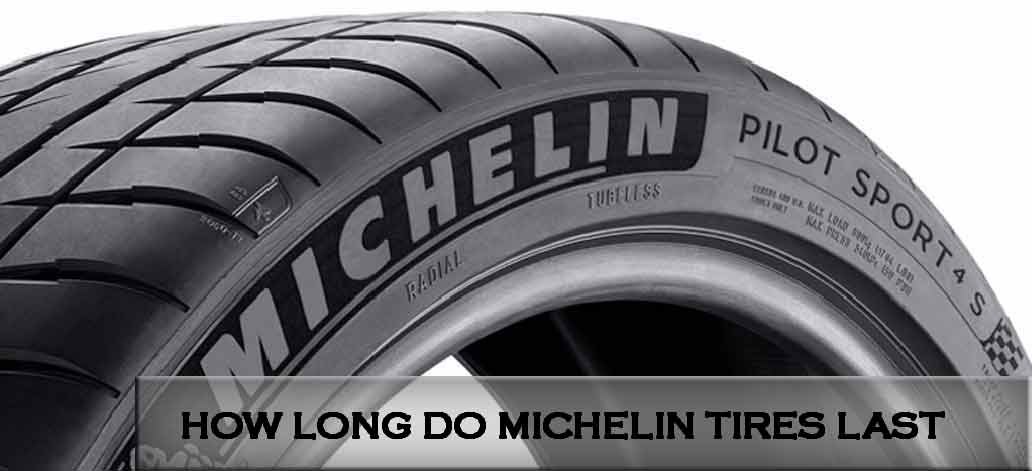 The marking on the tire indicates the maximum speed that the tire of this model can withstand. When choosing tires, this factor should be taken into account, since your car should drive at a speed of 10-15% less than the maximum allowable.
The marking on the tire indicates the maximum speed that the tire of this model can withstand. When choosing tires, this factor should be taken into account, since your car should drive at a speed of 10-15% less than the maximum allowable.
Marking "ZR" - indicates that the tires are designed for operation at speeds exceeding 240 km/h.
The "V" marking on a tire, together with the load index (example: 91V), means that the tires are designed for use at speeds up to 240 km/h, while the load index is indicated for a speed of 210 km/h. The load must be reduced by three percent in proportion to the increase in speed by 10 km/h.
The "W" marking on a tire, together with the load rating (example: 100W), indicates that the tires are designed for speeds up to 270 km/h, while the load rating is for 240 km/h. The load must be reduced by five percent in proportion to the increase in speed by 10 km/h.
The "Y" marking on a tire with a load index (example: 95Y) indicates that the tires are designed for speeds up to 300 km/h, while the load index is for a speed of 270 km/h. The load must be reduced by five percent in proportion to the increase in speed by 10 km/h.
The load must be reduced by five percent in proportion to the increase in speed by 10 km/h.
LOAD INDEX.
| Load index | Permissible load, kg | Load index | Permissible load, kg |
|---|---|---|---|
| 0 | 45 | 100 | 800 |
| 1 | 46.2 | 101 | 825 |
| 2 | 47.5 | 102 | 850 |
| 3 | 48.7 | 103 | 875 |
| 4 | 50 | 104 | 900 |
| 5 | 51.5 | 105 | 925 |
| 6 | 53 | 106 | 950 |
| 7 | 54. | 107 | 975 |
| 8 | 56 | 108 | 1000 |
| 9 | 58 | 109 | 1030 |
| 10 | 60 | 110 | 1060 |
| 11 | 61.5 | 111 | 1090 |
| 12 | 63 | 112 | 1120 |
| 13 | 65 | 113 | 1150 |
| 14 | 67 | 114 | 1180 |
| 15 | 69 | 115 | 1215 |
| 16 | 71 | 116 | 1250 |
| 17 | 73 | 117 | 1285 |
| 18 | 75 | 118 | 1320 |
| 19 | 77. | 119 | 1360 |
| 20 | 80 | 120 | 1400 |
| 21 | 82.5 | 121 | 1450 |
| 22 | 85 | 122 | 1500 |
| 23 | 87.5 | 123 | 1550 |
| 24 | 90 | 124 | 1600 |
| 25 | 92.5 | 125 | 1650 |
| 26 | 95 | 126 | 1700 |
| 27 | 97 | 127 | 1750 |
| 28 | 100 | 128 | 1800 |
| 29 | 103 | 129 | 1850 |
| 30 | 106 | 130 | 1900 |
| 31 | 109 | 131 | 1950 |
| 32 | 112 | 132 | 2000 |
| 33 | 115 | 133 | 2060 |
| 34 | 118 | 134 | 2120 |
| 35 | 121 | 135 | 2180 |
| 36 | 125 | 136 | 2240 |
| 37 | 128 | 137 | 2300 |
| 38 | 132 | 138 | 2360 |
| 39 | 136 | 139 | 2430 |
| 40 | 140 | 140 | 2500 |
| 41 | 145 | 141 | 2575 |
| 42 | 150 | 142 | 2650 |
| 43 | 155 | 143 | 2725 |
| 44 | 160 | 144 | 2800 |
| 45 | 165 | 145 | 2900 |
| 46 | 170 | 146 | 3000 |
| 47 | 175 | 147 | 3075 |
| 48 | 180 | 148 | 3150 |
| 49 | 185 | 149 | 3250 |
| 50 | 190 | 150 | 3350 |
| 51 | 195 | 151 | 3450 |
| 52 | 200 | 152 | 3550 |
| 53 | 206 | 153 | 3650 |
| 54 | 212 | 154 | 3750 |
| 55 | 218 | 155 | 3875 |
| 56 | 224 | 156 | 4000 |
| 57 | 230 | 157 | 4125 |
| 58 | 236 | 158 | 4250 |
| 59 | 243 | 159 | 4375 |
| 60 | 250 | 160 | 4500 |
| 61 | 257 | 161 | 4625 |
| 62 | 265 | 162 | 4750 |
| 63 | 272 | 163 | 4875 |
| 64 | 280 | 164 | 5000 |
| 65 | 290 | 165 | 5150 |
| 66 | 300 | 166 | 5300 |
| 67 | 307 | 167 | 5450 |
| 68 | 315 | 168 | 5600 |
| 69 | 325 | 169 | 5800 |
| 70 | 335 | 170 | 6000 |
| 71 | 345 | 171 | 6150 |
| 72 | 355 | 172 | 6300 |
| 73 | 365 | 173 | 6500 |
| 74 | 375 | 174 | 6700 |
| 75 | 387 | 175 | 6900 |
| 76 | 400 | 176 | 7100 |
| 77 | 412 | 177 | 7300 |
| 78 | 425 | 178 | 7500 |
| 79 | 437 | 179 | 7750 |
| 80 | 450 | 180 | 8000 |
| 81 | 462 | 181 | 8250 |
| 82 | 475 | 182 | 8500 |
| 83 | 487 | 183 | 8750 |
| 84 | 500 | 184 | 9000 |
| 85 | 515 | 185 | 9250 |
| 86 | 530 | 186 | 9500 |
| 87 | 545 | 187 | 9750 |
| 88 | 560 | 188 | 10000 |
| 89 | 580 | 189 | 10300 |
| 90 | 600 | 190 | 10600 |
| 91 | 615 | 191 | 10900 |
| 92 | 630 | 192 | 11200 |
| 93 | 650 | 193 | 11500 |
| 94 | 670 | 194 | 11800 |
| 95 | 690 | 195 | 12150 |
| 96 | 710 | 196 | 12500 |
| 97 | 730 | 197 | 12850 |
| 98 | 750 | 198 | 13200 |
| 99 | 775 | 199 | 13600 |
More information.
Tires must be marked as follows:
MAX PRESSURE - the maximum allowable tire pressure. For each type of tire, there are air pressure standards that must be observed. Violation of these requirements can lead to both increased or uneven wear of the tread, and a violation of the integrity of the tire, which is dangerous especially at high speeds. By the way, before adjusting the wheel alignment of the car - do not forget to bring the tire pressure back to normal!
What are the colored dots or circles on the tire for?
The red dot indicates the hardest point on the tire. If your rims are marked with a white dot, it is recommended to combine these two dots during tire fitting.
The yellow dot indicates the lightest spot on the tyre.
To a greater extent, both markings are needed for tire service employees, because this information will tell a competent specialist how to reduce the mass and number of balancing weights.
Tire construction materials - Tires may also bear the names of the materials that make up the tire carcass and breaker.
Here is an example of tire marking and its interpretation:
Metric marking system.
Example: TIRE LT205/55R16 91V
for trailers/semi-trailers and vans (these tires are not used for cars/trucks/SUVs; T - temporary use tire (for spare wheel)
205 - profile width in mm
55 - ratio of tire profile height to tire width.
R - the type of tire carcass has a radial structure (the absence of a default marking indicates that the tire is a diagonal type).
D (or not specified) - diagonal tire carcass type.
B - diagonally belted tire (bias belt). The structure of the tire carcass is diagonal with the use of a breaker, characteristic of radial tires.
16 — tire diameter value in inches (corresponds to the rim diameter of the disk).
91 - maximum load index. Marking is also used indicating the load in kg or pounds (max load).
V - tire speed index (see the value in the table).
The following markings are also possible:
The location of the speed index marking is allowed in different places: 225/50SR16, 225/50SR16 89S, 225/50R16 89S
Marking with the letter C after the diameter indicates that the tire is intended for commercial vehicles , as well as off-road trucks and pickups (example: 195/70R15C 104/102R).
If the manufacturer, after indicating the tire size, placed the letters XL, RF, SL, LL (example: P235 / 75R-15 XL, P285 / 35R-19 LL), this means that the tire has XL, RF - increased, SL - standard, LL - reduced bearing capacity. American P-marking XL corresponds to the maximum allowable pressure of 41 psi (280 kPa), SL and LL - 35 psi (240 kPa), in the European marking XL / RF corresponds to 42 psi (290 kPa), SL - 36 psi (250 kPa), LL is missing. The absence of this designation corresponds to the SL variant.
The presence of the letters FR (example: 215/45 R17 87V FR) after the specified size means that the tire has a protective portico on the sidewall that protects the rim and the rubber itself from damage.